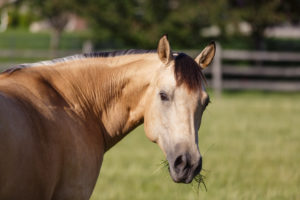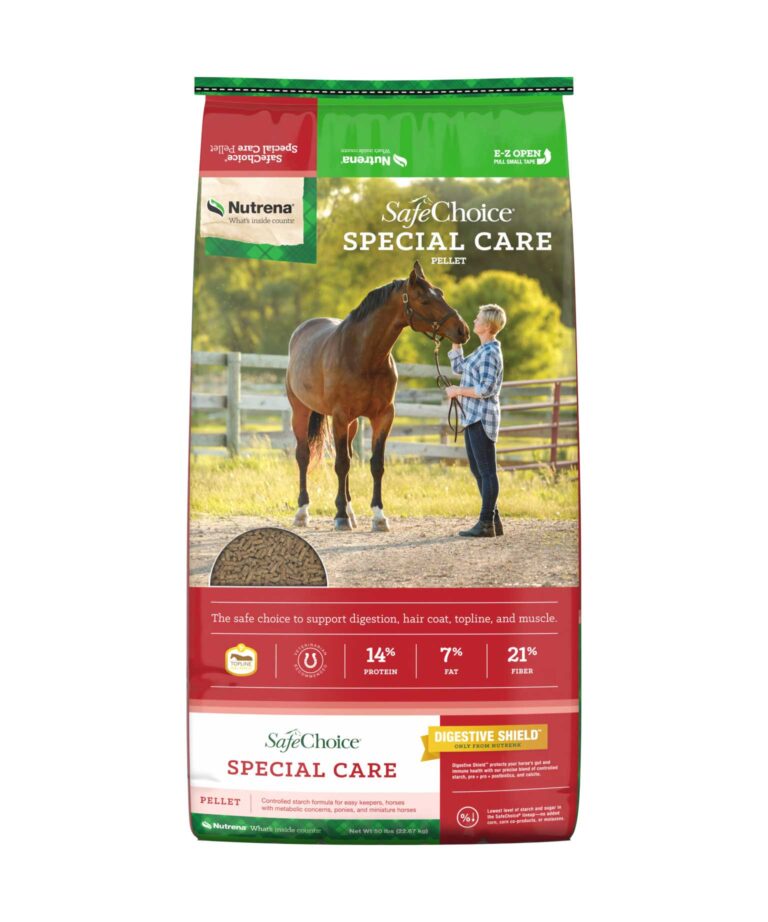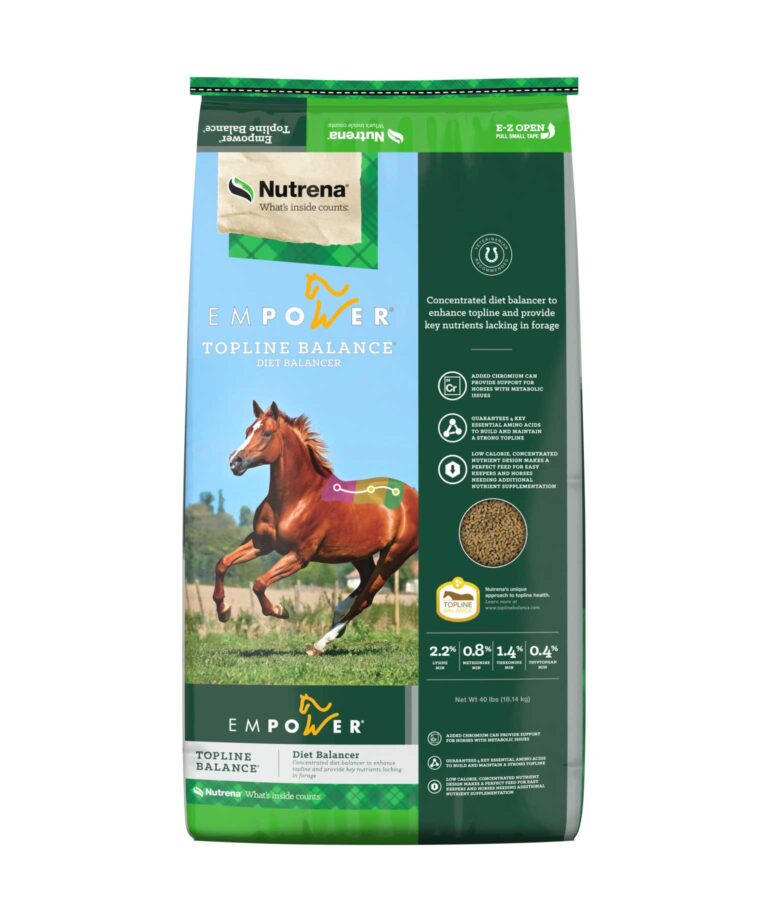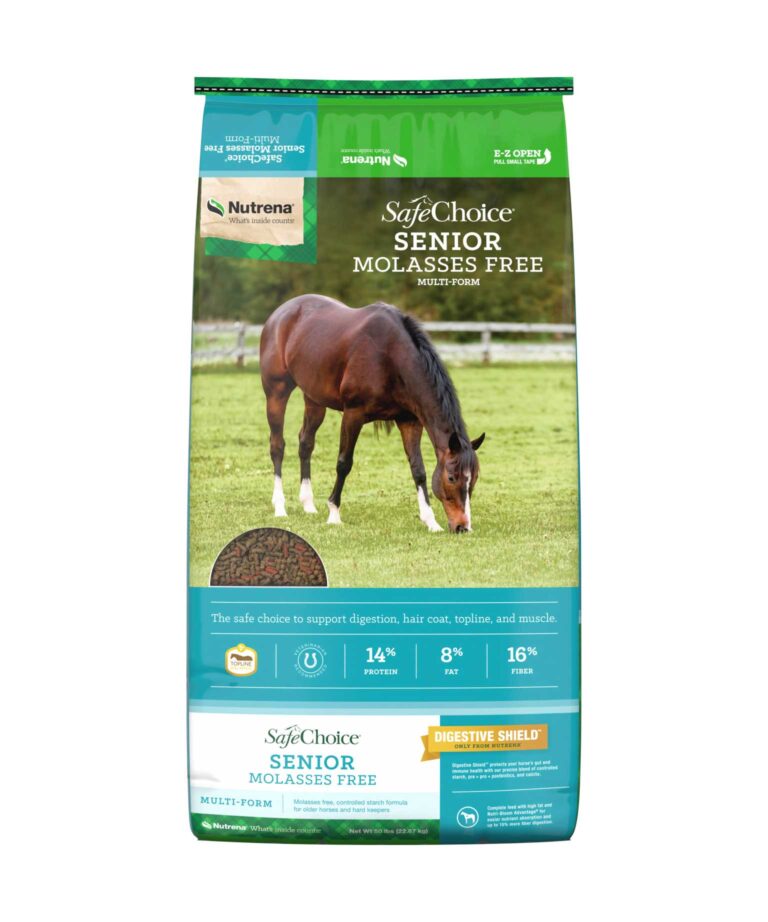What is Equine Metabolic Syndrome (EMS)?

EMS is a hormonal disorder in horses, similar to metabolic syndrome in humans, that is characterized by obesity, insulin resistance, and abnormal fat deposits, which can predispose affected horses to chronic laminitis.
What types of horses are affected?
First and foremost, most horses do not suffer from EMS. The majority of horses tolerate dietary carbohydrates such as starch, sugar and fructan, quite well, and thrive on this important and readily available source of energy. Performance horses in particular need sufficient non-structural carbohydrates (NSC) in their diets for work and recovery after exercise. Too little starch and sugar in the diet can diminish athletic performance over time in non-EMS horses.
EMS can occur in any breed, however ponies, Morgans, Paso Finos, and horses that tend to be “easy keepers” seem to be most vulnerable to developing EMS. It should also be noted that not all obese (fat) horses are insulin resistant, and not all insulin resistant horses are fat.
How do I know if my horse is insulin resistant (IR)?
Veterinary diagnostic testing (blood work) is recommended to confirm IR, but here are some other classic signs of insulin resistance in horses and ponies:
- A classic sign of IR is a “cresty neck”, of which a clear correlation between neck circumference and IR has been documented.
- Horses with regional deposits of lumpy or dimpled fat pads behind the shoulder, around tailhead, and/or over the loin are suspect of being IR.
- Horses that seem to gain weight rapidly, or blow up easily, particularly in spring with new pasture growth, relative to other horses may indicate IR.
- Horses that are tender footed, and/or that demonstrate rings on the hoof wall, expanded white line and blood spots on the soles of their feet, suggests mild, chronic bouts of laminitis and IR.
EMS is sometimes confused with other clinical disease such as Cushing’s Disease and hypothyroidism due to similar clinical signs, despite different underlying causes. It is very important to work with a trusted vet to ensure an accurate diagnosis if any of these conditions are suspected.
Traditional Grain or Ration Balancer?
When it comes to feeding a horse with EMS, it’s important to pay close attention to their starch and sugar intake.
Since forage should always be the base of any good equine diet, it’s important to know your hay’s NSC content. This can be done by a commercial laboratory. Depending on the findings, you can adjust the amount being fed and possibly soak the hay to remove some of the excess sugar.
If you are feeding a traditional grain, it is best to look for one especially formulated for horses with metabolic issues such as SafeChoice Special Care.
However, if you are concerned about caloric intake, a ration balancer might be a better option. This is a concentrated feed that is designed to be fed in smaller amounts, reducing caloric intake. A product like Empower Topline Balance provides amino acids, organic trace minerals, vitamins, pre- and probiotics in a concentrated form, designed to balance and complement the nutrition coming from forage.
While both products are low in non-structural carbohydrates (NSC), the major difference in the two products is the caloric content. SafeChoice Special Care is higher in calories compared to Empower Topline Balance. Because Empower is concentrated, the feeding rate (pounds per day) is much lower compared to SafeChoice Special Care. For horses needing additional calories beyond their forage, while keeping the diet balanced, Safe Choice Special Care would be a great choice. For horses that are overweight or doing just fine with forage only but would benefit from balancing the total diet with regard to amino acids, vitamins, minerals, a ration balancer such as Empower Topline Balance would be a good fit.
Estimating the horse’s target body weight and doing a body condition score are great tools to help determine which feed is best for your horse as well as how much to feed them based on manufacturer recommendations.
Ready to ensure your horse is getting the optimum nutrition at feeding time, every time? Find the perfect feed formulated specifically for horse’s needs with our Feed Selector Tool.




